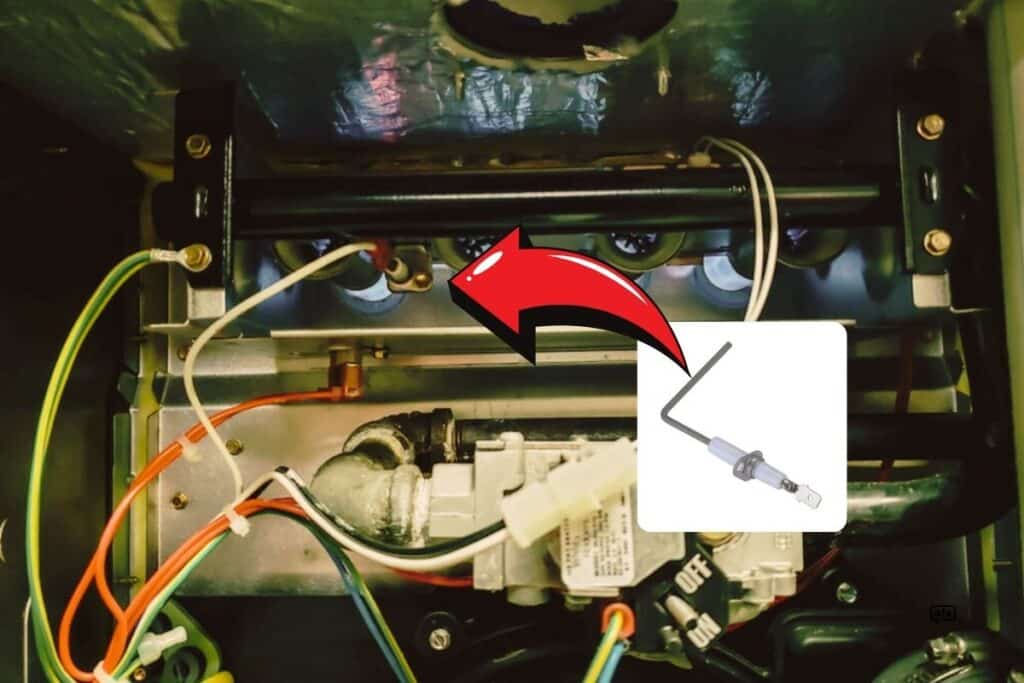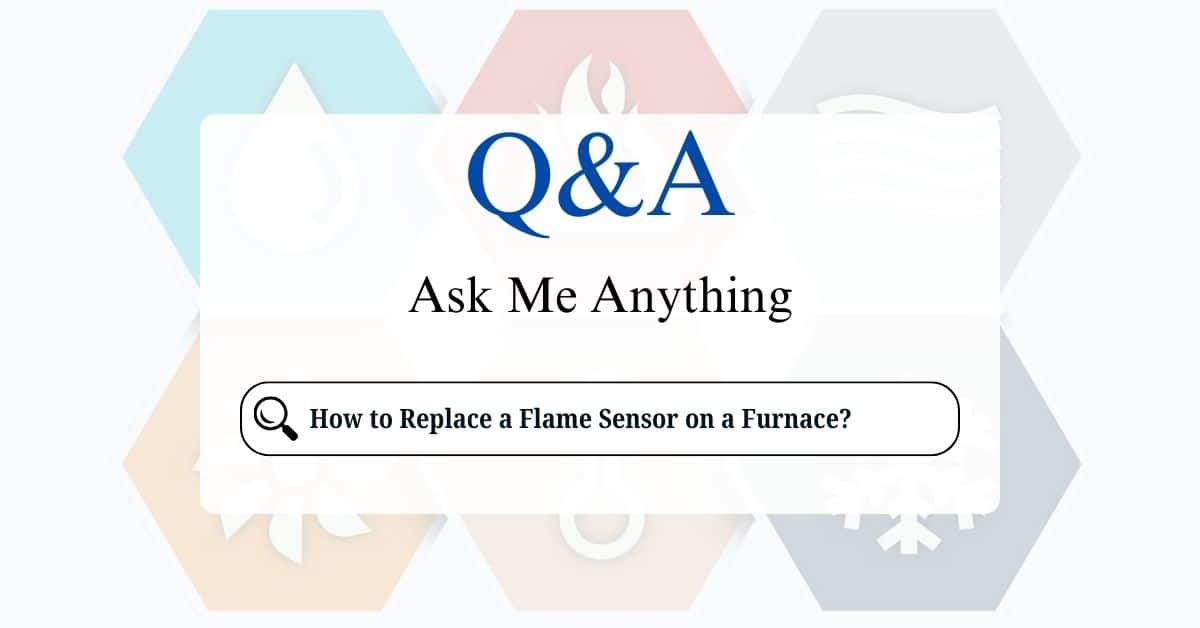The flame sensor is a critical safety component in your furnace, ensuring the system operates safely by detecting the presence of a flame. If the sensor malfunctions, the furnace may shut down prematurely or fail to ignite. Replacing a faulty flame sensor is a straightforward process you can often perform yourself. Here’s how to do it.
1. Turn Off the Power and Gas Supply
- Locate the furnace’s power switch (usually near the unit) and turn it off.
- For added safety, switch off the breaker connected to the furnace.
- Shut off the gas supply to the furnace to ensure there’s no risk of leaks during the repair.
2. Locate the Flame Sensor

- Open the furnace access panel using a screwdriver or nut driver.
- The flame sensor is a small metal rod located near the burner assembly, typically attached with a single screw.
- It may have one or two wires connected to the furnace control board.
3. Disconnect the Flame Sensor
- Carefully disconnect the wire(s) attached to the flame sensor. These wires usually have a push or slide connector.
- Unscrew the mounting screw holding the flame sensor in place using a screwdriver or socket wrench.
- Gently remove the flame sensor from the furnace.
4. Inspect the Flame Sensor (Optional)
- Examine the sensor for corrosion, soot, or debris. If the sensor appears dirty but intact, you can try cleaning it before replacing it.
- Use fine-grit sandpaper or a steel wool pad to gently clean the metal rod.
- Reinstall the cleaned sensor and test the furnace before proceeding with a replacement.
5. Install the New Flame Sensor
- Take the new flame sensor (compatible with your furnace model) and position it where the old sensor was.
- Secure it with the mounting screw, ensuring it is snug but not overly tight.
- Reconnect the wire(s) to the new flame sensor, ensuring a secure connection.
6. Reassemble the Furnace
- Replace the furnace access panel and secure it with screws.
- Turn the gas supply back on.
- Restore power to the furnace by flipping the switch or circuit breaker.
7. Test the Furnace
- Set the thermostat to a heating mode and turn it up to trigger the furnace.
- Observe the furnace operation to ensure it ignites properly and continues running without shutting off prematurely.
- If the problem persists, further diagnosis may be needed.
Tips for a Successful Replacement:
- Buy the Correct Replacement Part: Ensure the new flame sensor matches your furnace model. Check your owner’s manual or consult the manufacturer if unsure.
- Keep the Sensor Clean: Regularly clean the flame sensor during annual furnace maintenance to extend its life.
- Inspect Other Components: While replacing the flame sensor, check the burners and igniter for dirt or damage.
People also ask:
How do I know if my furnace flame sensor is bad?
- The furnace ignites but shuts down after a few seconds.
- The control board displays an error code indicating flame failure (consult your furnace manual for specific codes).
- The furnace fails to ignite despite normal operation of other components.
Can I replace a flame sensor myself?
Yes, if you’re comfortable working with your furnace and have basic tools. It’s a straightforward process involving removing the old sensor and installing a new one.
How much does replacing a flame sensor on a furnace cost?
A replacement flame sensor typically costs $10–$50 for the part, while professional installation may range from $75–$250.
How long does it take to replace a flame sensor?
Replacing a flame sensor usually takes about 10–30 minutes, depending on your experience and access to the sensor.
Can I run my furnace without a flame sensor?
No, the flame sensor is a safety device that prevents unburned gas from accumulating, which can be dangerous.
How do you reset the flame sensor on a furnace?
Flame sensors cannot be reset. However, you can clean it to remove dirt or corrosion or replace it if it’s faulty.
When to Call a Professional
- The furnace still malfunctions after the flame sensor is replaced.
- You notice other issues, such as a damaged control board or faulty wiring.
- You’re uncomfortable working with gas or electrical components.
Following these steps, you can safely and efficiently replace a faulty flame sensor, ensuring your furnace operates reliably and safely. If the issue persists, contact a licensed HVAC technician for further assistance.






